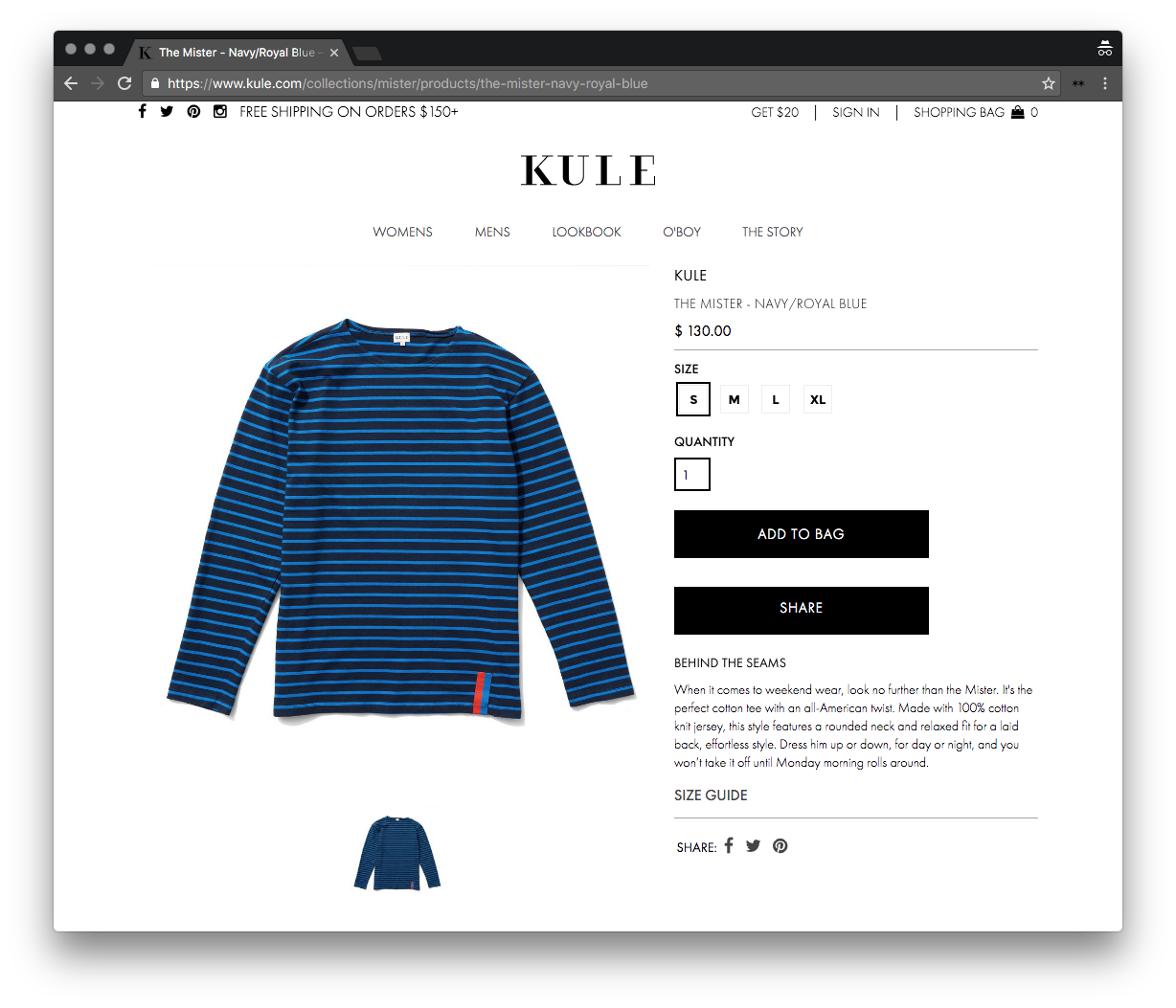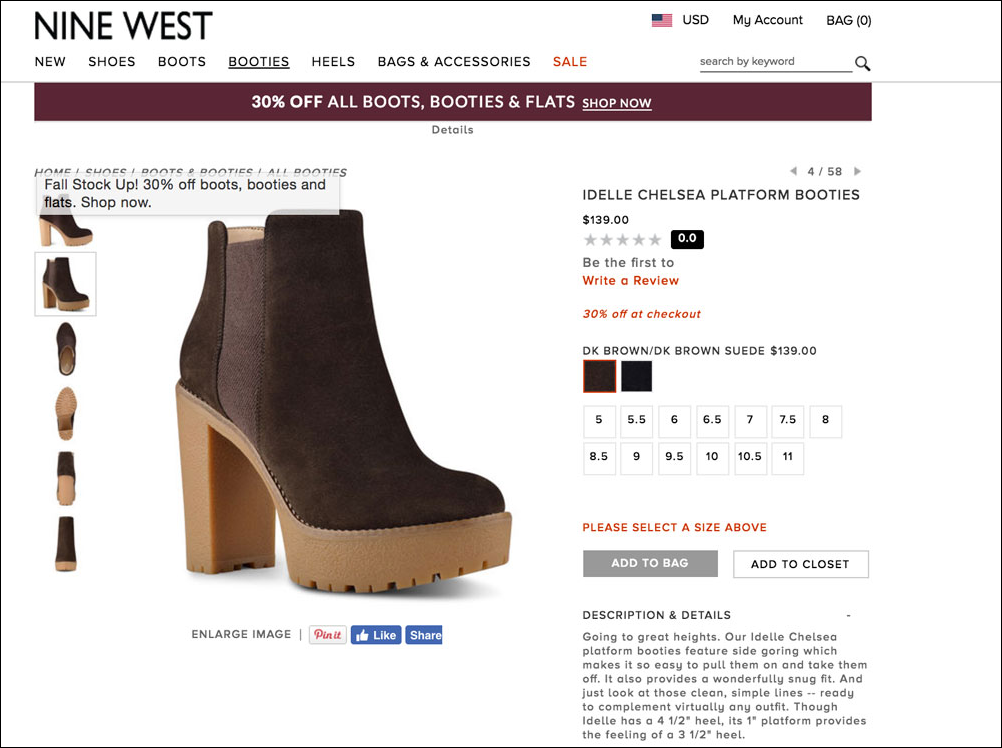When marketers think about how to win at eCommerce, the first name that comes to mind is Amazon.
44% of consumers turn to Amazon first when they’re looking to make a purchase online, versus a meager 21% who check retailers’ websites first. On Amazon, people can quickly find and buy just about anything they want online while detailed customer reviews from its 310 million monthly active users show them whether it’s worth buying.
Brick-and-mortar retailers and eCommerce companies can’t help but look at the Amazon model with envy. They mimic Amazon in hopes that it will lead to success, mimicking the layout of products on their sites and the power of community that Amazon pioneered through ratings & reviews.
(source: Nine West)
Whether you are an established brand or just starting out, you have a big opportunity to get ahead of Amazon. As you do through reviews, you need to engage with your customers and harness social proof in a way that will help your business grow. That doesn’t always mean reviews. Amazon knows this. And now so will you.
It’s all about capitalizing on social proof, what prospective customers see their friends using and enjoying, and wanting to partake in it too…
Why reviews work for your business
Reviews are a generally accepted best-practice for e-commerce websites, and it’s worth digging into why.
- Reviews are powerful en masse. People form an opinion after reading 1-6 reviews, so it’s imperative that you can collect a lot of them either organically or via brand reviews provided by platforms like Bazaarvoice and PowerReviews. It’s important too to note that 44% of consumers don’t trust reviews that weren’t written in the past month—you need a lot of frequent, recent reviews.
- Turn traffic into testimonials. To get a high volume of reviews, convert visitors into reviewers. Companies just starting out with e-commerce often don’t have the traffic necessary to generate loads of reviews, so it’s important that reviews are front and center.
- Accentuate the positive. People are 52% more likely to post a negative review than a positive one. So every single positive experience is precious. One bad review on a site with poor traffic can be enough to dissuade others from even trying the product (and reviewing it later).
So, while reviews are effective and necessary, they aren’t a silver bullet, which of course marketing practitioners know now. And, they aren’t the only way to for the positive experience customers have with your products and brand to convince new customers that they will have a similarly great experience.
Referrals target your best future customers
A review can explain what makes a product great, but not what makes it great for each individual customer. When surveyed, the only group that a group of consumers trusted more than reviews were friends and family. While reviews are a passive form of customer acquisition, referrals are targeted to your best customers. They are outbound, delivered by your advocates to their friends.
Think about it this way: if a close friend tells you about a product they love, you’ll consider that your friend is telling you about it because they know you and they know you’ll like it.
Kule’s referral program is a great example. It offers a dual-sided $20 incentive for both advocates and friends. Kule is a small company and they’re not trying to compete with Amazon. What they’re doing here is incentivizing old and new customers to go back to your website, purchase more, and get their friends to do the same.

All of this empowers new companies to build up a loyal customer base who will help grow the company in the future.
So, whether you are at an emerging brand like Kule or an established brand well versed in the power of the voice of the customer, here are a couple ways to get started with the outbound recommendations that come with a refer-a-friend program:
- Add prominent referral calls-to-action (CTAs). You have a limited amount of real-estate on your site to promote behaviors or actions other than purchase. Add refer-a-friend CTAs prominently to get the awareness and reach of social sharing buttons, the personal testimonials of reviews, and uniquely direct revenue.
- Make sharing seamless. Not only does Kule include a big, easily-seen “Share” CTA, it doubles down by including social buttons for sharing on Facebook, Twitter, and Pinterest. This reduces friction for advocates looking to share and helps them do so as quickly as possible.
- Make your referral program easy to find. It sounds obvious, but the more times you show people that they can share, the more they will share. The “$20” icon on the site’s header points customers them back to the “share stripes” program, so customers never lose sight of Kule’s referral program.
No matter how you spin it, having enthusiastic customers is an amazing thing. The more customers refer their friends, the more traction your site will gain.
Keep engaging your customers
Getting one set of customers to refer their friends isn’t enough. For referrals to work, referred customers need to complete the cycle of referrals. In turn, they should refer their friends, turn them into customers, and have those new customers refer their friends, and so forth.
Brand loyalty alone isn’t enough. You need to mobilize your loyal customers, and turn them into advocates, if you want to build up a sturdy group of reliable customers in the future. So get to it!




